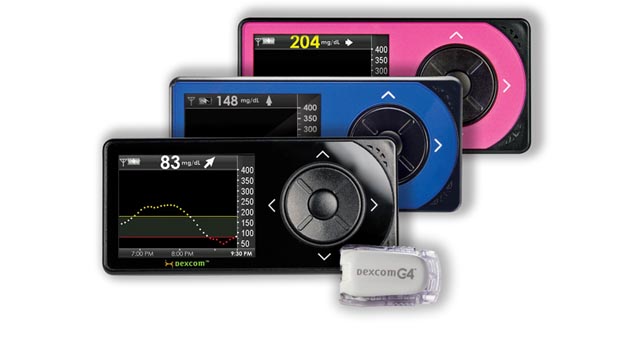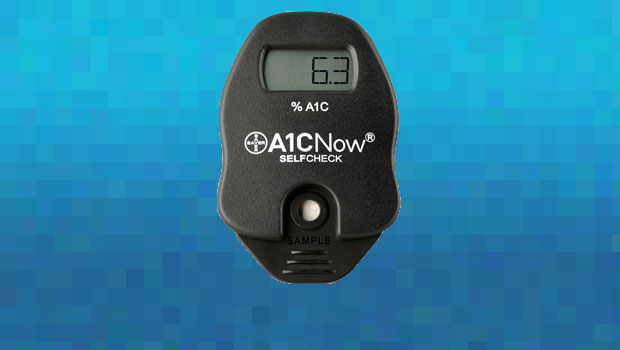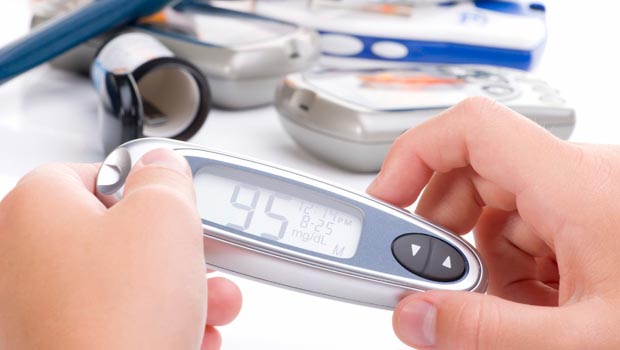Better Math, Smarter Meters

A little over a decade ago, when Sridhar Iyengar and Sonny Vu began working on better signal processing between diabetes meters and test strips, they thought the diabetes care marketplace would clamor for any improvements the two young inventors could uncover. The duo decided to create better control algorithms to license to big meter makers, and they quickly found ways to improve accuracy by tinkering with meter mathematics.
“We knew nothing about diabetes except that it was a big market and that we could use our math skills to make better meters,” says Iyengar.
But their improvements didn’t garner much attention then because the industry was focused on blood glucose test strips. Strips, not meters, were the moneymaker, to the extent that free meters were as common as free advice for people with diabetes.
For more than 20 years in the diabetes care industry, meters were the razors and test strips were the blades, a classic business model of a fixed platform combined with a disposable product. Instead of licensing algorithms, Iyengar and Vu went on to create their own meter, a product they called the “nugget” and Sanofi calls the iBGStar glucometer.
That was the reality until July 1, 2013, when Medicare fully implemented a new competitive bidding process for durable medical goods like diabetes care products, a move expected to reduce Medicare’s reimbursement for those goods by up to 72%. The reduction in revenue from test strip sales may very well awaken a new desire in diabetes care product companies to improve meter accuracy. Many people believe that applying better mathematics to blood glucose analysis is the best way to improve reading accuracy, and there is considerable profit potential for whichever company can make this improvement possible.
What Stands in the Way of Accuracy
Accurate blood glucose readings matter most for people who use insulin to control their diabetes. An inaccurate reading, particularly on the high side, can lead to an insulin overdose and hypoglycemia. Potentially false glucose readings have been the direct cause of three meter recalls this year, including the most recent Nova Diabetes recall.
Hypoglycemia in the U.S. costs billions each year, whether attributed to inaccurate glucose readings or other causes. It’s the lives lost that matter the most, but another important issue is the fear of hypoglycemia events that news of inaccurate strip readings can foster.
Most of us are reasonably comfortable with handheld technology, and a glucometer looks and feels somewhat like a cell phone in your hand. Almost everyone has a mobile phone, and we don’t think about how the device works when we answer the phone. Similarly, most people with diabetes don’t think about how their meters work, or question their accuracy.
But at the very least strip users should be aware of the variances allowed by the FDA on both low and high sides, and know how well their meter performs in field tests. (You can find a link to one such analysis here. Owners of meters made by the major brands and most large-scale store brands may be pleasantly surprised by how accurate their devices are.)
But regardless of who’s conducting the testing, or when the testing is done, it’s unlikely that the reading on your screen will match “lab value,” – the theoretical “real” BG number. Even tests done back to back in a 5-minute span won’t produce the same value very often.
Here’s why. Glucose meters today are based on an electrochemical model, in which a very small volume of whole blood is placed in contact with two reagents pre-coated on the strip. One reagent is an enzyme that reacts with the glucose molecule, removing its two electrons. The other is a “mediator molecule,” which sends the two electrons to electrodes that measure the current produced by the reaction and display a value on the screen. The more excess glucose in the sample, the higher the number. One website that explains the composition and function of test strips likens the enzyme-mediator duo to an “electron bucket brigade” capable of repeating the transfer process again and again if necessary. But the concentrations of glucose in a given sample, and thus the contents of each “bucket,” will be slightly different in each test, and so will the results. While there are many different enzymes and mediators available to build a test strip, all meters and their strips are based on a variation of this bucket-brigade process.
Test strips are manufactured in batches of millions, and no matter how stringent the controls of the process, some variation between strips is bound to occur. Since chemicals are being used, heat, cold, dampness, dryness, and accidental exposure to other chemicals can affect accuracy. It was exposure to an industrial chemical that affected reactions and signals in some Nova Diabetes test strips, triggering the July 2013 recall of 62 million strips.
Cancelling the “Noise”
If we can’t always control exposure to temperature variation or to materials and conditions that might affect accuracy, we may be able to anticipate these factors and create formulas to mitigate or eliminate negative effects. In his Ph.D. thesis at the University of Cambridge (UK), Iyengar focused on determining how much of the signal produced by the electrodes generating a particular number on the screen was due to glucose concentrations and how much came from other substances, such as Vitamin C. (Yes, popping a couple of Vitamin C caplets every day can affect the accuracy of your glucose readings.) In his research, Iyengar showed how to create an algorithm that muffles or eliminates the effects of Vitamin C on glucose readings.
“The meter and the strips aren’t really separable,” Iyengar says. “If you know how variations such as summer heat and humidity’s impact on chemicals will impact the signal, then you can correct for that in an algorithm. We can predict impact on the manufacturing process several months in advance and correct for them in formulas.”
The diabetes industry now is more receptive to such improvements, as there is growing outside pressure for better accuracy from regulators and from the marketplace. As reported in a recent Insulin Nation story (“Test Strip Accuracy: Blood In, Garbage Out?”) new standards for measuring glucose accuracy were recently issued by the International Organization for Standards (ISO). It is a safe bet that most large meter and strip manufacturers are already gearing up to meet the new, more stringent criteria in their manufacturing processes.
Still, even if new strips hit the market today, there are millions of test strips already in the marketplace or in patients’ homes that were made to conform to the old standards. A massive recall isn’t practical, or even necessary. Alert testers will know that their readings may not be as accurate, but, for most, it isn’t possible or financially attractive to dump all their old strips. Even if everyone wanted to, it would take months for newer strips to fully enter the diabetes supply chain.
It may fall then to meter-makers to find ways to catch variance. It may be possible to implement algorithms that will enable old strips to act like new ones. In this scenario, a new meter would be needed, but millions of test strips already bought and paid for would be saved from obsolescence, and people who test would have renewed confidence that the data they use to calculate insulin doses is as close to correct as humanly possible outside of a clinical setting.
In any case, perhaps you should hold on to that free meter. It may be the last one you get.
Thanks for reading this Insulin Nation article. Want more Type 1 news? Subscribe here.
Have Type 2 diabetes or know someone who does? Try Type 2 Nation, our sister publication.







